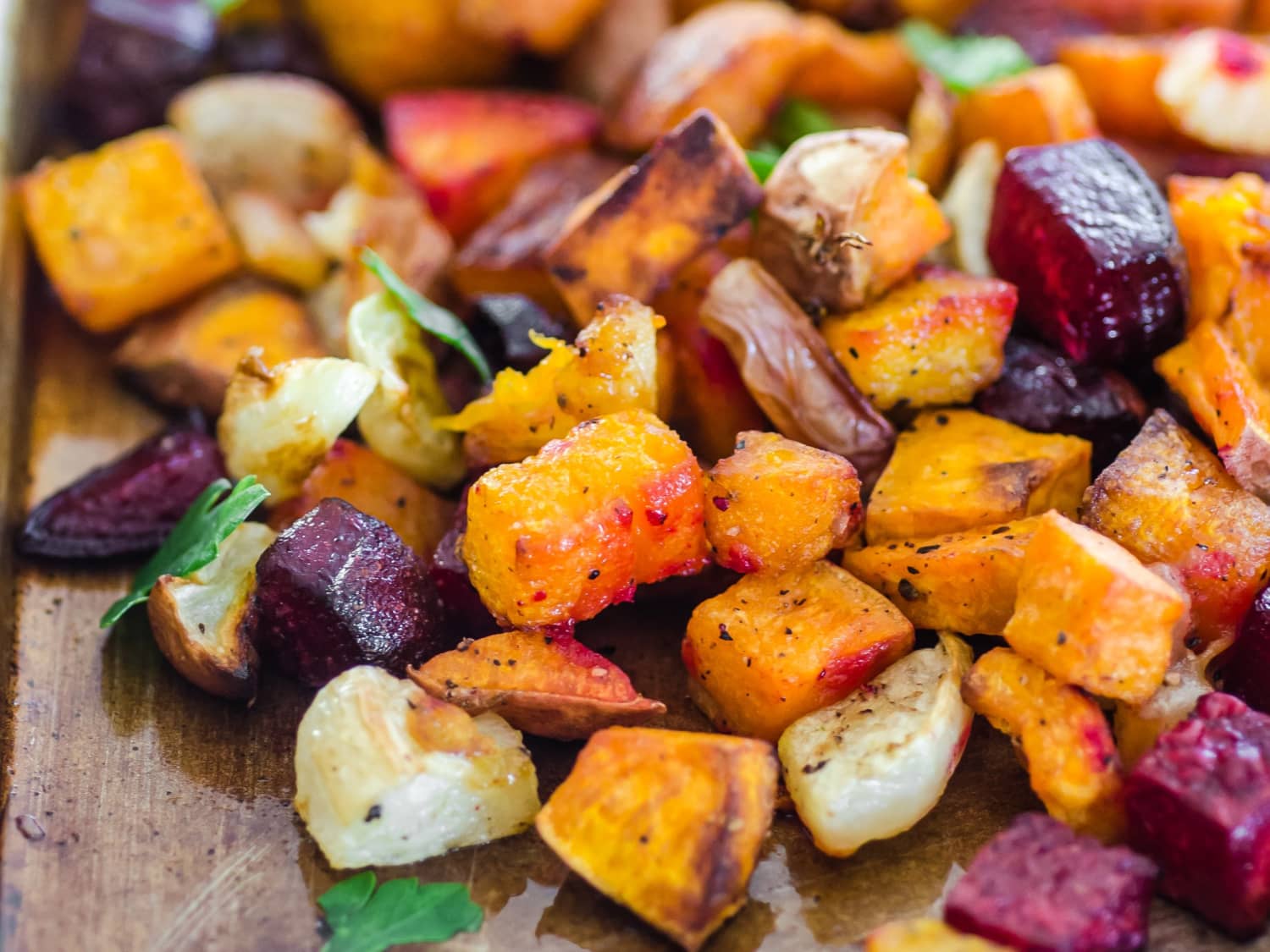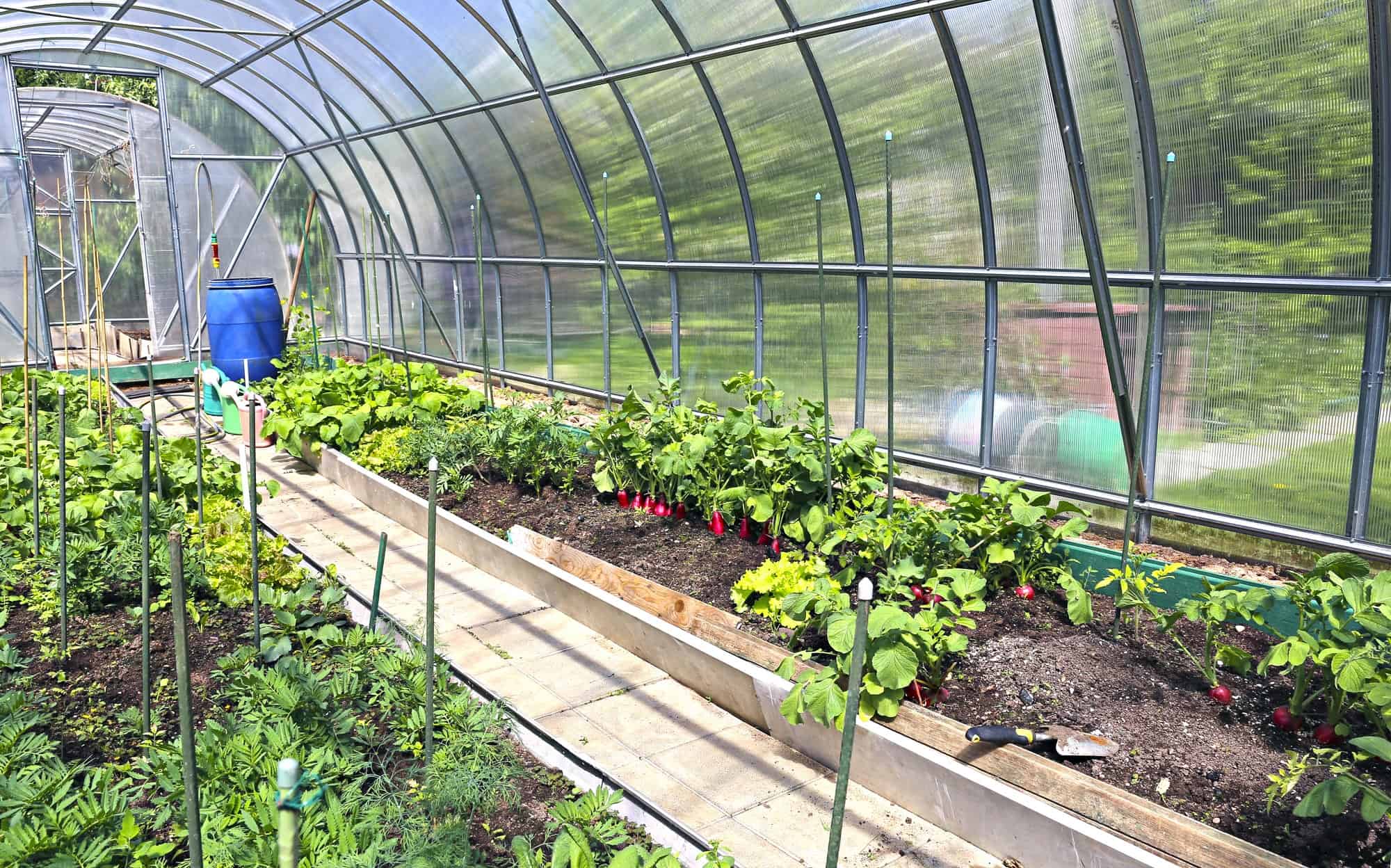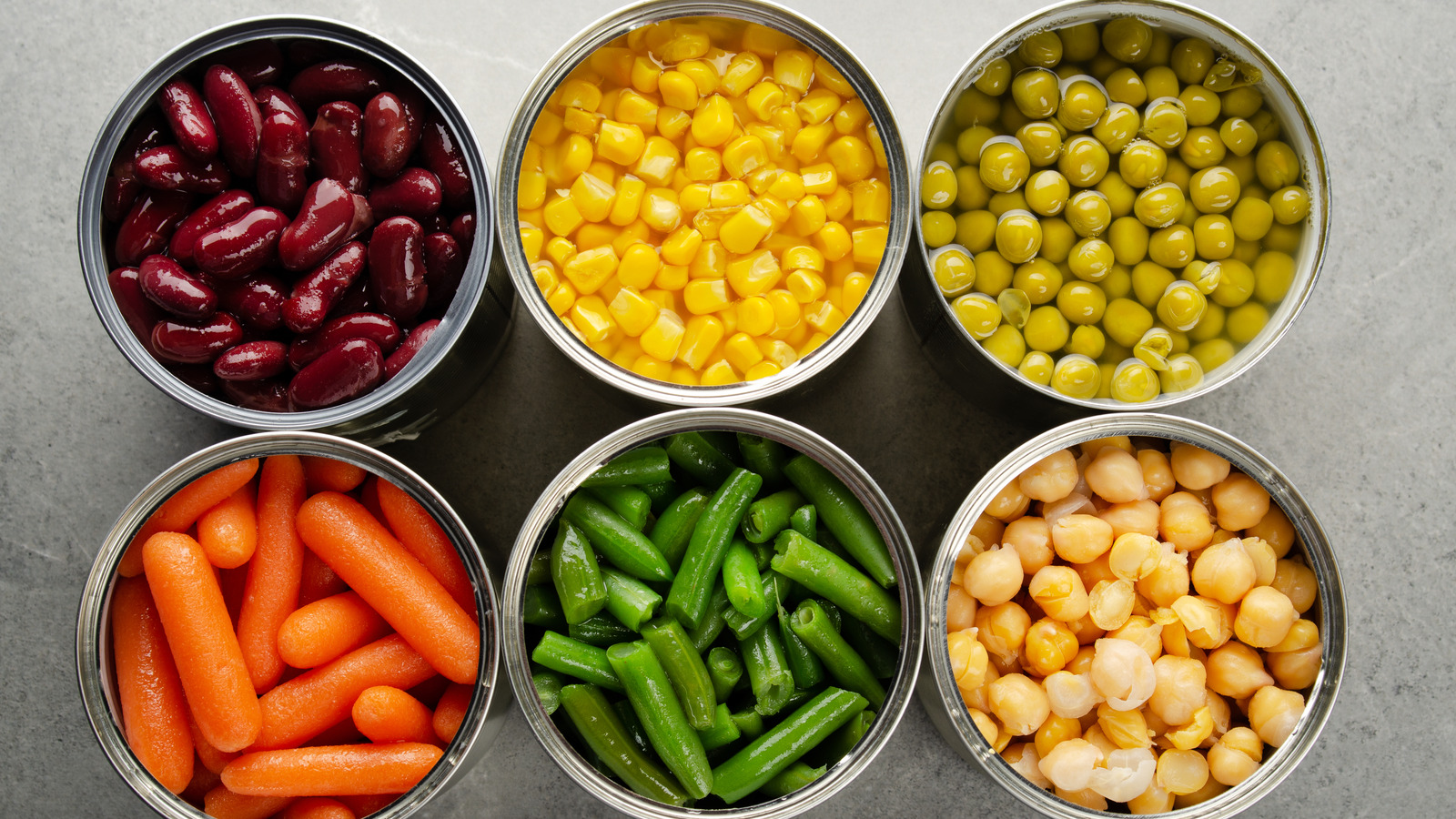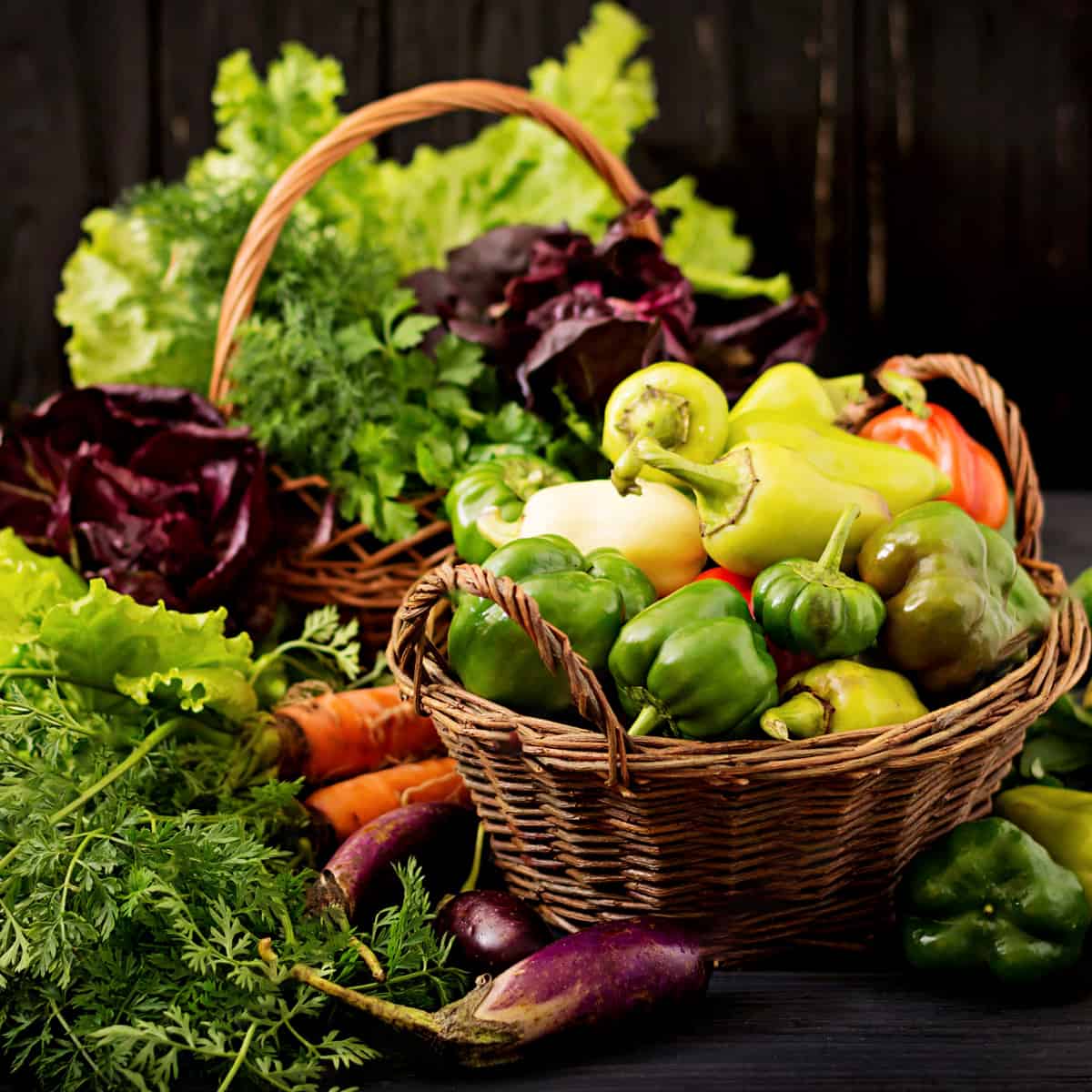Home>Gardening News and Trends>Latest News>How Long To Steam Vegetables In Instant Pot
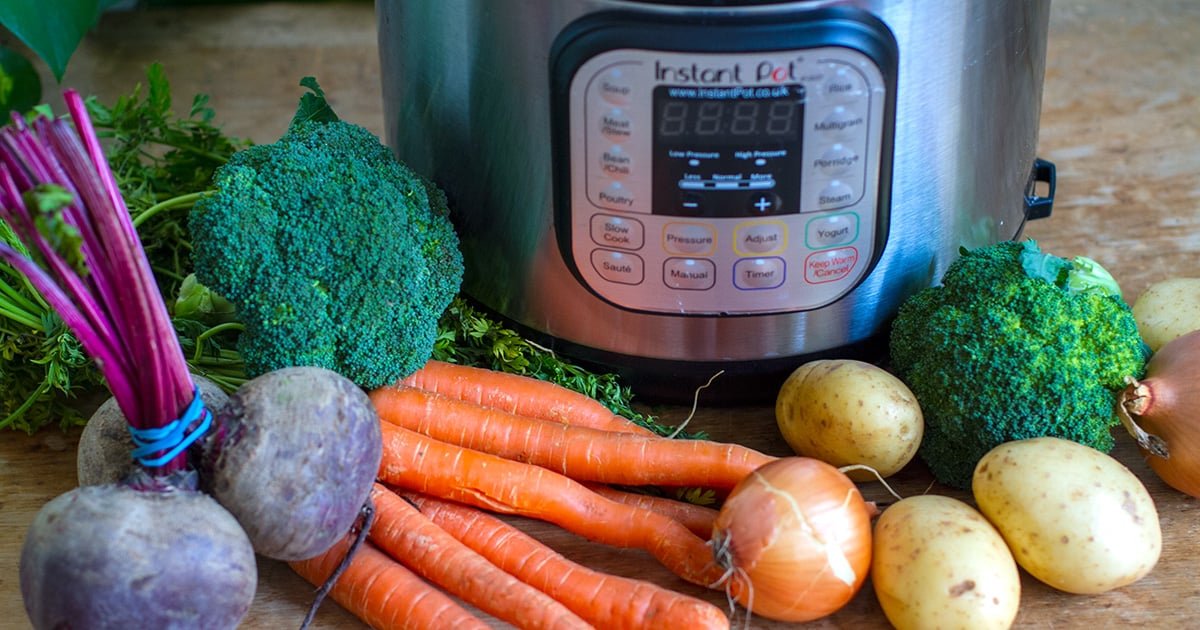

Latest News
How Long To Steam Vegetables In Instant Pot
Modified: January 22, 2024
Discover the latest news on how long to steam vegetables in the Instant Pot. Get expert tips and techniques for perfectly cooked veggies in no time!
(Many of the links in this article redirect to a specific reviewed product. Your purchase of these products through affiliate links helps to generate commission for Chicagolandgardening.com, at no extra cost. Learn more)
Table of Contents
Introduction
Welcome to the world of quick and nutritious cooking with the Instant Pot! If you’re looking to make healthy and delicious meals without spending hours in the kitchen, you’re in the right place. In this article, we’ll explore the art of steaming vegetables in an Instant Pot and uncover the many benefits it offers.
Steaming is a cooking technique that has been used for centuries to preserve the natural flavors and nutrients of food. With the Instant Pot, you can enjoy the convenience of steaming vegetables in a fraction of the time it takes on the stovetop. Whether you’re a busy professional, a health-conscious individual, or simply someone who wants to add more vegetables to their diet, steaming in an Instant Pot is a game-changer.
Not only does steaming vegetables in an Instant Pot retain the vibrant colors and textures of the vegetables, but it also allows them to retain their vitamins, minerals, and antioxidants. This cooking method is known to be one of the healthiest ways to prepare vegetables as it requires little to no added fats or oils.
Moreover, the Instant Pot’s precise temperature control ensures that the vegetables are cooked evenly and thoroughly. No more overcooked or undercooked vegetables! Plus, its sealed pressure cooking function helps to lock in the flavors and nutrients, resulting in tender and flavorful vegetables every time.
In the next sections, we’ll explore the common vegetables that are perfect for steaming, how to prepare them for steaming, the step-by-step process of steaming in an Instant Pot, and essential tips for achieving perfectly steamed vegetables. So, let’s dive in and discover the art of steaming vegetables in an Instant Pot!
Benefits of Steaming Vegetables in an Instant Pot
Steaming vegetables in an Instant Pot offers a multitude of benefits that make it a popular choice for home cooks. Here are some of the key advantages:
- Retains Nutrients: Steaming is a gentle cooking method that helps retain the vital nutrients in vegetables. Unlike boiling or frying, which can cause nutrient loss, steaming preserves the vitamins, minerals, and antioxidants that contribute to a healthy diet.
- Preserves Color and Texture: When you steam vegetables in an Instant Pot, they retain their vibrant colors and crisp textures. This not only enhances the visual appeal but also ensures a satisfying eating experience.
- Quick and Convenient: Steaming vegetables in an Instant Pot is incredibly fast and convenient. With just a few minutes of prep time and the set-it-and-forget-it nature of the Instant Pot, you can have perfectly steamed vegetables ready to serve in no time.
- Enhances Flavor: Steaming vegetables in an Instant Pot helps to intensify their natural flavors. The sealed cooking environment traps in the moisture, resulting in tender and flavorful vegetables without the need for extra fats or oils.
- Versatile Cooking Options: The Instant Pot offers various cooking modes, allowing you to customize the steaming process based on your preferences. Whether you prefer a soft texture, like for steamed broccoli, or a slightly firmer texture for root vegetables, the Instant Pot can deliver the desired results.
- Allows for Batch Cooking: With the Instant Pot’s spacious cooking capacity, you can easily steam a large quantity of vegetables in one go. This is especially useful for meal prepping or when cooking for a crowd.
- Energy Efficient: Steaming vegetables in an Instant Pot is energy-efficient compared to traditional stovetop cooking methods. The Instant Pot uses less electricity and cooks faster, helping you save time and reduce your carbon footprint.
These benefits make steaming vegetables in an Instant Pot a must-try for anyone looking to incorporate more nutritious and delicious vegetables into their diet. The next section will delve into the common vegetables that can be steamed in an Instant Pot, allowing you to explore a wide range of culinary possibilities.
Common Vegetables for Steaming
Steaming opens up a world of possibilities when it comes to cooking vegetables. While almost any vegetable can be steamed, some varieties are particularly well-suited for this cooking method. Here are some of the most common vegetables that can be steamed to perfection in an Instant Pot:
- Broccoli: Broccoli florets are a popular choice for steaming, as they become tender yet retain a satisfying crunch. Steaming broccoli helps to preserve its vibrant green color and delicate flavor.
- Carrots: Steamed carrots retain their natural sweetness and become tender yet firm. They make for a versatile and nutritious addition to any meal.
- Cauliflower: Steamed cauliflower is tender and has a mild, slightly nutty flavor. It can be enjoyed as a side dish or used as a low-carb substitute for rice or mashed potatoes.
- Green Beans: Steaming green beans preserves their vibrant green color and crisp texture. They make a delicious side dish or can be incorporated into salads, stir-fries, or casseroles.
- Asparagus: Steamed asparagus is tender, yet retains a satisfying bite. It has a delicate flavor that pairs well with a variety of dishes, from pasta to grilled meats.
- Brussels Sprouts: Steamed Brussels sprouts become tender and slightly sweet. They are a nutritious vegetable that can be enjoyed on its own or added to salads, stir-fries, or roasted vegetable medleys.
- Zucchini: Steamed zucchini is tender and mild in flavor. It can be enjoyed as a simple side dish or used in recipes such as zucchini noodles or fritters.
- Peas: Steamed peas retain their vibrant green color and natural sweetness. They are a versatile vegetable that can be enjoyed on their own, added to salads, or used in risottos and pasta dishes.
- Sweet Potatoes: Steamed sweet potatoes are soft and moist, making them a nutritious alternative to traditional mashed potatoes. They can also be cubed and added to soups, stews, or grain bowls.
These are just a few examples of the many vegetables that can be steamed in an Instant Pot. Feel free to experiment with different combinations and seasonings to create your own culinary masterpieces. The next section will guide you through the process of preparing vegetables for steaming, ensuring that you achieve the best results every time.
How to Prepare Vegetables for Steaming
Properly preparing your vegetables before steaming is crucial to achieving the best results. Here’s a step-by-step guide to preparing vegetables for steaming:
- Wash the Vegetables: Start by washing the vegetables thoroughly under cold running water. This helps remove any dirt or impurities on the surface of the vegetables.
- Trim and Cut: Trim off any tough stems or ends from the vegetables. For larger vegetables like broccoli or cauliflower, separate them into florets or bite-sized pieces. For longer vegetables like carrots or asparagus, trim them into even-sized pieces.
- Uniformity is Key: Aim for uniformity in the size of the vegetable pieces. This ensures that they will cook evenly and at the same rate.
- Seasoning: While not necessary, you can add a pinch of salt or your favorite herbs and spices to enhance the flavor of the vegetables. Toss the vegetables with the seasoning to evenly coat them.
- Optional: Marinate or Add Sauces: If you prefer a more pronounced flavor, you can marinate the vegetables for a short period or add your favorite sauces or dressings just before steaming. This will infuse the vegetables with additional taste.
- Add Liquid: Most vegetables release natural moisture while steaming, but if needed, you can add a small amount of liquid to the Instant Pot. This can be water, broth, or a flavorful liquid of your choice.
- Use Steam Rack or Steamer Basket: To prevent the vegetables from sitting in the liquid and becoming waterlogged, place them on a steam rack or in a steamer basket. This elevates them above the liquid while allowing the steam to circulate evenly.
- Stacking: If you’re steaming multiple vegetables at once, you can stack them in layers using the steam rack or steamer basket. Just ensure that the vegetables are arranged evenly, and there is enough space for steam to circulate.
- Secure the Instant Pot: Close the lid of the Instant Pot, ensuring that the sealing ring is in place and the valve is set to the sealing position.
By following these steps, you’ll have perfectly prepared vegetables ready for steaming in your Instant Pot. The next section will guide you through the step-by-step process of steaming vegetables, providing you with all the information you need to achieve delicious results.
Step-by-Step Guide to Steaming Vegetables in an Instant Pot
Steaming vegetables in an Instant Pot is a breeze once you know the steps. Follow this simple step-by-step guide to get perfectly steamed vegetables every time:
- Add Liquid: Start by adding a small amount of liquid, such as water or broth, to the inner pot of the Instant Pot. This will create steam for cooking the vegetables.
- Insert Steam Rack or Steamer Basket: Place the steam rack or steamer basket in the Instant Pot, making sure it is elevated above the liquid. This will prevent the vegetables from sitting in the liquid and becoming waterlogged.
- Arrange Vegetables: Place the prepared vegetables on top of the steam rack or in the steamer basket. Make sure they are evenly arranged and not overcrowded to ensure even cooking.
- Close the Lid: Securely close the lid of the Instant Pot, ensuring that the sealing ring is properly in place and the valve is set to the sealing position. This will create a sealed environment for steaming.
- Select Pressure Cook Setting: Choose the “Pressure Cook” or “Manual” setting on the Instant Pot, depending on the model you have. Adjust the cooking time using the “+” or “-” buttons as needed.
- Set Cooking Time: Set the cooking time based on the recommended times for the specific vegetables you are steaming. Refer to cooking charts or recipes for accurate cooking times.
- Start Steaming: Press the “Start” button on the Instant Pot to begin the steaming process. The Instant Pot will take some time to build up pressure, and then the cooking time will start counting down.
- Natural or Quick Release: Once the cooking time is complete, you have the option to either let the pressure release naturally or perform a quick release. Natural release involves letting the Instant Pot sit for a few minutes until the pressure releases on its own. Quick release involves carefully turning the valve to the venting position to release the pressure manually.
- Remove Vegetables: Carefully open the lid of the Instant Pot, ensuring to lift it away from your face to avoid getting burned by the hot steam. Use tongs or a slotted spoon to remove the steamed vegetables from the Instant Pot.
- Serve and Enjoy: Transfer the steamed vegetables to a serving dish and season as desired. Serve them as a side dish, incorporate them into recipes, or enjoy them as a healthy snack.
By following these steps, you’ll be able to steam a wide variety of vegetables to perfection with your Instant Pot. The next section will provide you with approximate cooking times for different vegetables, helping you achieve the ideal level of doneness.
Cooking Times for Steaming Vegetables in an Instant Pot
The cooking times for steaming vegetables in an Instant Pot may vary depending on the size and type of vegetable. Here are approximate cooking times to help you achieve the perfect level of doneness:
- Broccoli: 1-2 minutes on high pressure.
- Carrots: 3-4 minutes on high pressure for sliced or diced carrots, or 10-12 minutes for whole baby carrots.
- Cauliflower: 2-3 minutes on high pressure.
- Green Beans: 1-2 minutes on high pressure.
- Asparagus: 2-3 minutes on high pressure.
- Brussels Sprouts: 3-4 minutes on high pressure.
- Zucchini: 2-3 minutes on high pressure.
- Peas: 1 minute on high pressure.
- Sweet Potatoes: 8-10 minutes on high pressure for cubed sweet potatoes, or 12-15 minutes for whole sweet potatoes.
Keep in mind that these cooking times are approximate and may vary depending on the size and freshness of the vegetables, as well as personal preference for doneness. It’s always a good idea to start with the lower end of the cooking time range and adjust as needed.
If you’re steaming a combination of vegetables with different cooking times, it’s best to start with the vegetable that requires the longest cooking time and add the other vegetables later in the cooking process to ensure they are all cooked to perfection.
Remember to factor in the time it takes for the Instant Pot to come to pressure and for the pressure to naturally release or quick release before opening the lid. This additional time should be taken into account when planning your cooking process.
With these approximate cooking times, you’ll be able to achieve tender and perfectly steamed vegetables using your Instant Pot. The next section will provide you with essential tips to help you master the art of steaming vegetables.
Tips for Perfectly Steamed Vegetables
To ensure that you achieve perfectly steamed vegetables every time, here are some essential tips to keep in mind:
- Don’t Overcook: Keep a close eye on the cooking process and avoid overcooking the vegetables. Steamed vegetables should be tender yet still slightly crisp to the bite.
- Check for Doneness: Test the doneness of the vegetables by inserting a fork or toothpick. It should easily go through the vegetables with a slight resistance.
- Avoid Overcrowding: Do not overcrowd the Instant Pot with too many vegetables. This can lead to uneven cooking. If necessary, steam the vegetables in batches to ensure even cooking.
- Cut Vegetables Evenly: Cut the vegetables into similar sizes to ensure they cook at the same rate. This will help prevent some pieces from being undercooked while others are overcooked.
- Use Natural Release: When steaming delicate vegetables like broccoli or asparagus, opt for natural release to prevent them from becoming mushy. Quick release is more suitable for denser vegetables like sweet potatoes or carrots.
- Season After Steaming: Add salt, herbs, spices, or dressings to the steamed vegetables after they are cooked. This allows you to adjust the seasoning to your taste preferences.
- Keep it Simple: While seasoning can enhance the flavor of steamed vegetables, sometimes simplicity is key. Let the natural flavors of the vegetables shine by keeping the seasonings minimal.
- Experiment with Herbs and Spices: Don’t be afraid to try different herbs and spices to flavor your steamed vegetables. Fresh herbs like parsley or thyme, or seasonings like garlic powder or paprika, can add a delightful touch.
- Add a Splash of Citrus: Squeeze fresh lemon, lime, or orange juice over the steamed vegetables just before serving to add a bright and refreshing note to the flavors.
- Reheat with Care: If you have leftover steamed vegetables, reheat them gently to maintain their texture and flavor. Using the steam function or gentle stovetop reheating methods will yield better results than microwaving.
By following these tips, you’ll be well on your way to achieving perfectly steamed vegetables with your Instant Pot. Remember, practice makes perfect, and don’t be afraid to experiment with different vegetables and seasonings to discover your favorite combinations. Happy steaming!
Conclusion
Steaming vegetables in an Instant Pot is a fantastic way to prepare healthy, flavorful, and nutrient-rich dishes with unparalleled convenience. The Instant Pot’s ability to cook vegetables quickly, while retaining their vibrant colors, textures, and vital nutrients, makes it a valuable kitchen tool for any home cook.
By steaming vegetables, you can enjoy their natural flavors without the need for excessive fats or oils. The precise temperature control of the Instant Pot ensures that your vegetables are cooked evenly and with the perfect level of doneness.
From broccoli and carrots to zucchini and sweet potatoes, an array of common vegetables can be transformed into delicious steamed creations in the Instant Pot. The versatility of steamed vegetables allows them to be enjoyed as standalone side dishes, incorporated into various recipes, or added to salads and stir-fries.
Remember to properly prepare your vegetables by washing, trimming, and seasoning them before placing them in the Instant Pot. It’s also crucial to adhere to the recommended cooking times for each vegetable to achieve the ideal texture and flavor.
With the tips provided, you can elevate your steaming game and consistently produce perfectly steamed vegetables. Whether you prefer a simple and minimalistic approach or enjoy experimenting with different seasonings and flavor profiles, steaming in an Instant Pot offers endless possibilities.
So, if you’re looking for a convenient and efficient way to cook healthy and delicious vegetables, look no further than the Instant Pot. Embrace the art of steaming, and watch as your meals become healthier, tastier, and more visually appealing.
Now, it’s time to unleash your creativity and start steaming your favorite vegetables in your Instant Pot. Happy cooking!
